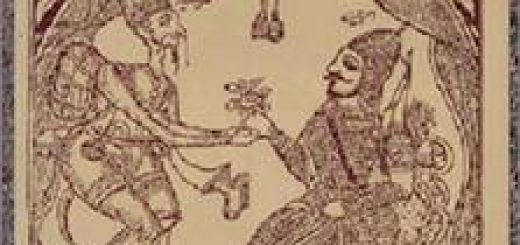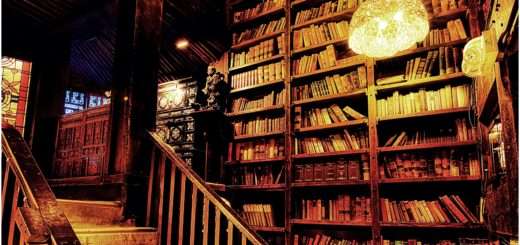Book Review: The Cairo trilogy by Naguib Mahfouz – By Harpreet
Book Review: The Cairo trilogy by Naguib Mahfouz
– By Harpreet
A review of three masterpieces of the Arabic novel. The three books that make up the Cairo trilogy: Palace Walk, Palace of Desire, and Sugar Street, occupy a central place in the work of Nobel laureate Naguib Mahfouz, and together represent the high water mark of the Arabic novel.
Written between 1956 and 1959, the trilogy chronicles the lives of three generations of a middle class merchant family between 1917 and 1944. Set against the background of Egypt’s struggle for independence from Britain and the turbulent politics of self rule, the books cast a light on early twentieth century Egyptian history and society, as well as examining many of the intellectual strands and political movements that are pertinent to an understanding of Egypt’s modern tussle for true liberation and democracy. It is a record of an era.
But more than anything, the trilogy is an intimate dissemination of the soul, desires, imagination and motivations of individuals, an interrogation of the family, and Mahfouz orchestrates it with the precision of a master.
All human life is here. The action takes place in the alleyways of old Cairo, the mosques and shrines of the devout, the bustling bazaars and streets, in drinking dens and coffee shops, in alcohol sodden revelries in brothels and river boats on the Nile, servant’s quarters and the mansions of the rich and powerful, in the ferment of the freedom struggle. Punctuated with the drama of life, births, marriages and deaths, complete with grasping mistresses [‘Oh Lord of heavens” he reflected, “Is this how manicured nails turn into claws?”], a nymphomaniac mother-in-law, a moralizing Shaykh, a martyred son; in short, everything one could want in a novel (as I will refer to the trilogy as one organic whole) of such breadth and life. It is a world of sublimated sexuality and illicit affairs, where a stolen glance carries immense erotic charge, and the high and the low move together, where respectability is a mirage and desire is repented at the Friday prayers.
The Cairo trilogy is in some ways, an old fashioned work, Tolstoyan in its scope, which mixes Proustian reminiscence with the realism of Zola and Balzac. It recalls Dicken’s depiction of London as a crucible of humanity in its evocation of teeming Cairene society. But most of all, the books are accessible, easy to read and seamlessly blend the intimate within their epic timeframe, and large cast of characters. Not once does the interest falter, or the plot confuse.
The trilogy begins, unforgettably, at midnight in the family house on Palace Walk, where Amina awaits the return of her husband from an evening of carousing. She battles her fear of the dark and the jinn’s that lurk in the shadows, where there ‘were demons who could not be lured away from these spacious, empty old rooms for long she frequently heard their whispers. Time and again she was awakened by their warm breath. It is not until her lord and master returns that she will feel safe, whereupon she will attend to his every need, before rising again at dawn to carry out the household duties.
And it is her husband, al-Sayyid Ahmad al-Jawad who dominates the novel. He is a remarkable character, a womanising, alcohol drinking playboy outside, but a puritanical, ultra strict patrician who rules his family with a rod of iron at home. His children quake in his presence, and his wife and daughters are so heavily sequestered that they are forbidden to leave the house, not even to visit the local mosque, the shrine of al-Husayn. Even al-Sayyid Ahmad’s friends view his attitudes as unreasonably old fashioned. Nevertheless, his response when his wife advances an objection to his repeated late nights surmises the intensity of his rule, when he says, ‘I’m a man. I’m the one who commands and forbids. I will not accept any criticism of my behaviour. All I ask of you is to obey me. Don’t force me to discipline you .
It would be easy to interpret this as an indictment of patriarchy and the repressive nature of the traditional Arab family structure. And on one level, it may be right to do so. Yet, al-Sayyid Ahmad is more than just a stereotypical domestic tyrant. Away from the home he is a warm hearted, virile lover of women and music, with genuine charm and humour. And as the trilogy proceeds, we witness the corrosive nature of time and circumstance upon his authority, as his children grow into the world, and the political destiny of Egypt is contested both within, and without, the family home.
Throughout the novel, Amina represents a stable presence, a moral and emotional lynchpin. And although she is uneducated and naïve, in many ways simple, and submits to her husband’s word unquestioningly, she is never presented as ignorant, or a timid victim. She has an inner life, a steady worldview which revolves around her family and her religion. When she prays, it is selflessly, only for her family. And her lack of awareness of the forces shaping the world beyond the confines of what she knows (‘Communists? What community is this? The Shi’ah community of Ali? ) renders all the more poignant her bewilderment at the changing world and trials of life she and her family endure.
Through the trilogy we watch the five children of the family grow and meet their fate. Of the three sons, the eldest is Yasin, a lustful hedonist who views women as disposable creatures to be deflowered and discarded. His erotic misadventures lead to cross-generational relationships that will raise your eyebrows with their import and ironies.
Fahmy is a high minded and patriotic student, who finds purpose in the struggle for independence from British colonial rule, and the two daughters are Khadija, big-nosed, sharp tongued and sarcastic [‘I’ve been saved from the scorpion sting of your tongue. I’ve been expecting it would reach out and bite me ); and Aisha, gentle, malleable and beautiful. The interplay and dialogue between these siblings is recognisable and insightful.
But it is the youngest son, Kamal, whose journey into adulthood from a wide eyed, intelligent, innocent child to a man whose loss of belief and love lead him into a stultifying ennui, that pushes forward much of the story into Palace of Desire and Sugar Street. His disillusionment with religion, and inability to reconcile himself and the rationalist ideas he disseminates to the societal and familial forces surrounding him, represents the difficulty Egyptian society faced, and to some extent still does face, in coming to terms with the modern world. It is Kamal that wrestles most deeply with the philosophical issues contested in the books. His expansive growth from innocent child to tortured adult resonates with the themes prevalent: sin and salvation, rationalism and religion, the self or the mass, the binding ties of family, the nature of romantic love.
Mahfouz has created a three-dimensional world, peopled by three-dimensional characters, and it is the delineation of the inner life of these characters that gives the trilogy its strong insights into human life. As the narration flits between third person narrative and first person ‘stream of thought we see and experience the world as seen and considered by the protagonists, in prose that is sometimes florid but always effective.
Another delight of the books is the vibrancy of the dialogue between the many quick-witted characters. During one of his many whiskey-fuelled soirees, al-Sayyid Ahmad crosses swords with the singer Zanuba, soon to be his mistress:
[‘What a man you are! On the outside you are dignified and pious, but inside you’re licentious and debauched. Now I really believe what I was told about you.
Al-Sayyid Ahmad sat up with interest and asked, ‘What were you told? May God spare us the evil of what people say.
‘They told me you are a womaniser and a heavy drinker.
He sighed audibly in relief and commented, ‘I thought it would be criticism of some fault, thank God. ]
And when Khadija is scolded by her mother-in-law, who was the midwife at her birth, she is told, ‘I received you with my own hands when you were born to which she receives the stinging reply ‘In that case, it’s a miracle I survived . Such repartee and humour inhabits the pages of the trilogy, side by side with the tragic ironies and pathos of the lives chronicled.
In truth, in a piece like this, one can but hint at the treasures that the 1,200 pages of the trilogy hold, the drama and psychological insight they provide. So this is less a review, than an advertisement, a prompting, and a recommendation. I have found that the true worth of a novel is found in how strongly the characters live in your mind after you have finished it. You remember the protagonists of a novel, more than events, because they lived and breathed and were recognisable to you as humans. Because a work of literary art tries to resolve the mysteries and perils of the human, of being human. The characters are the beating heart of the novel. And the greater the work of literature, the less they will fade from memory, because they stay with you, so real and alive they seem. Read Palace Walk, Palace of Desire and Sugar Street. The characters that inhabit the Cairo trilogy will keep you company for a long, long time after you have turned over the last page.














